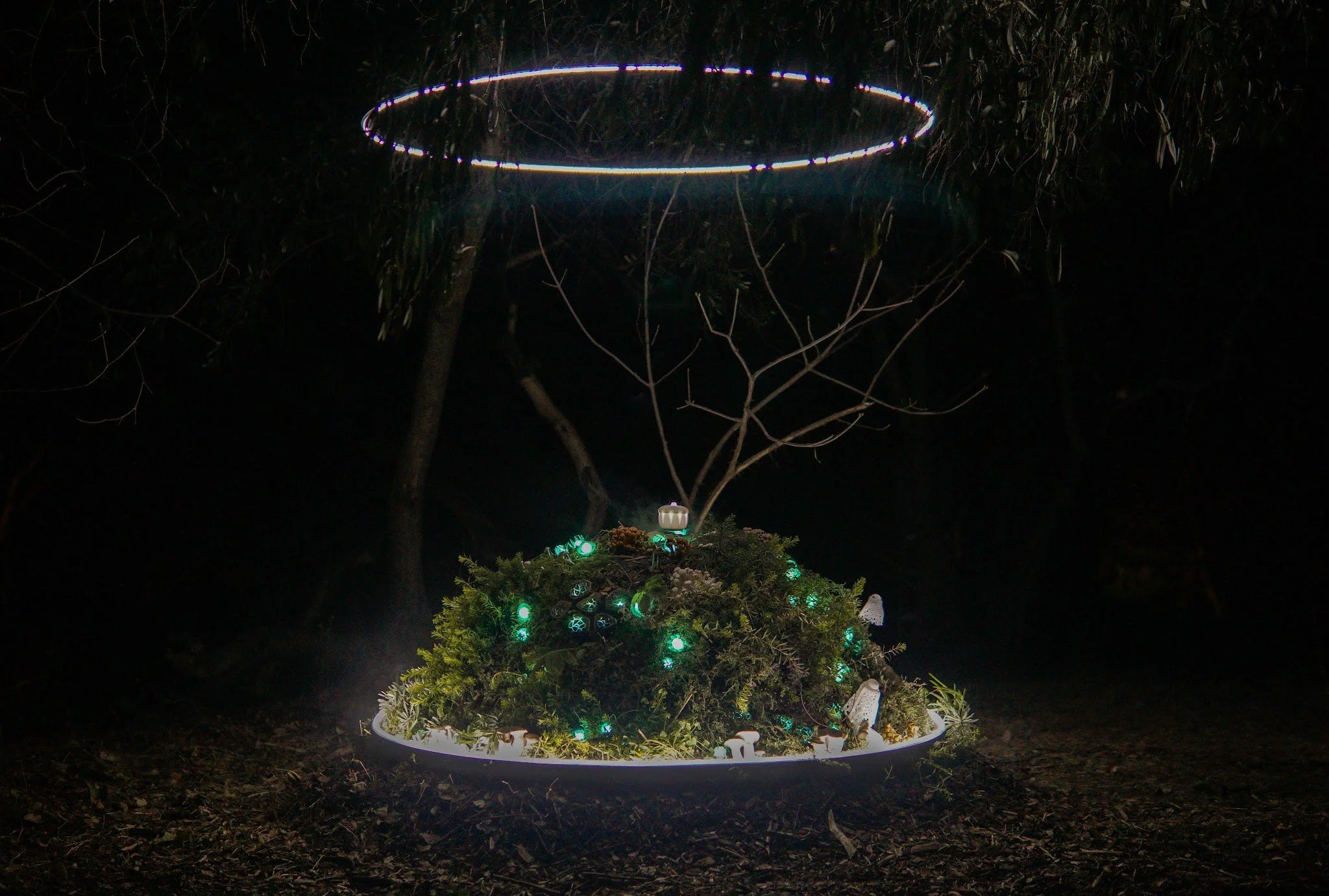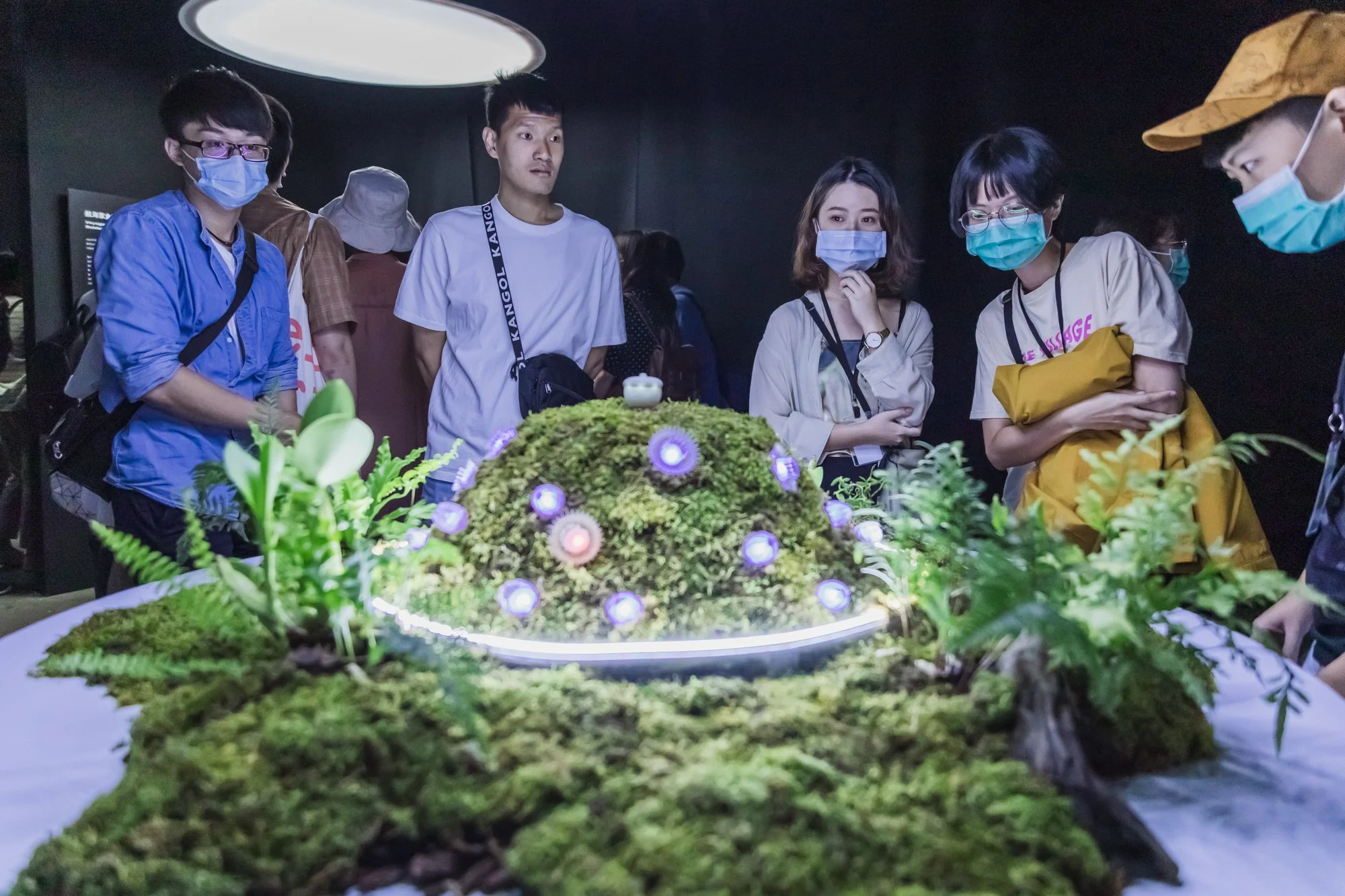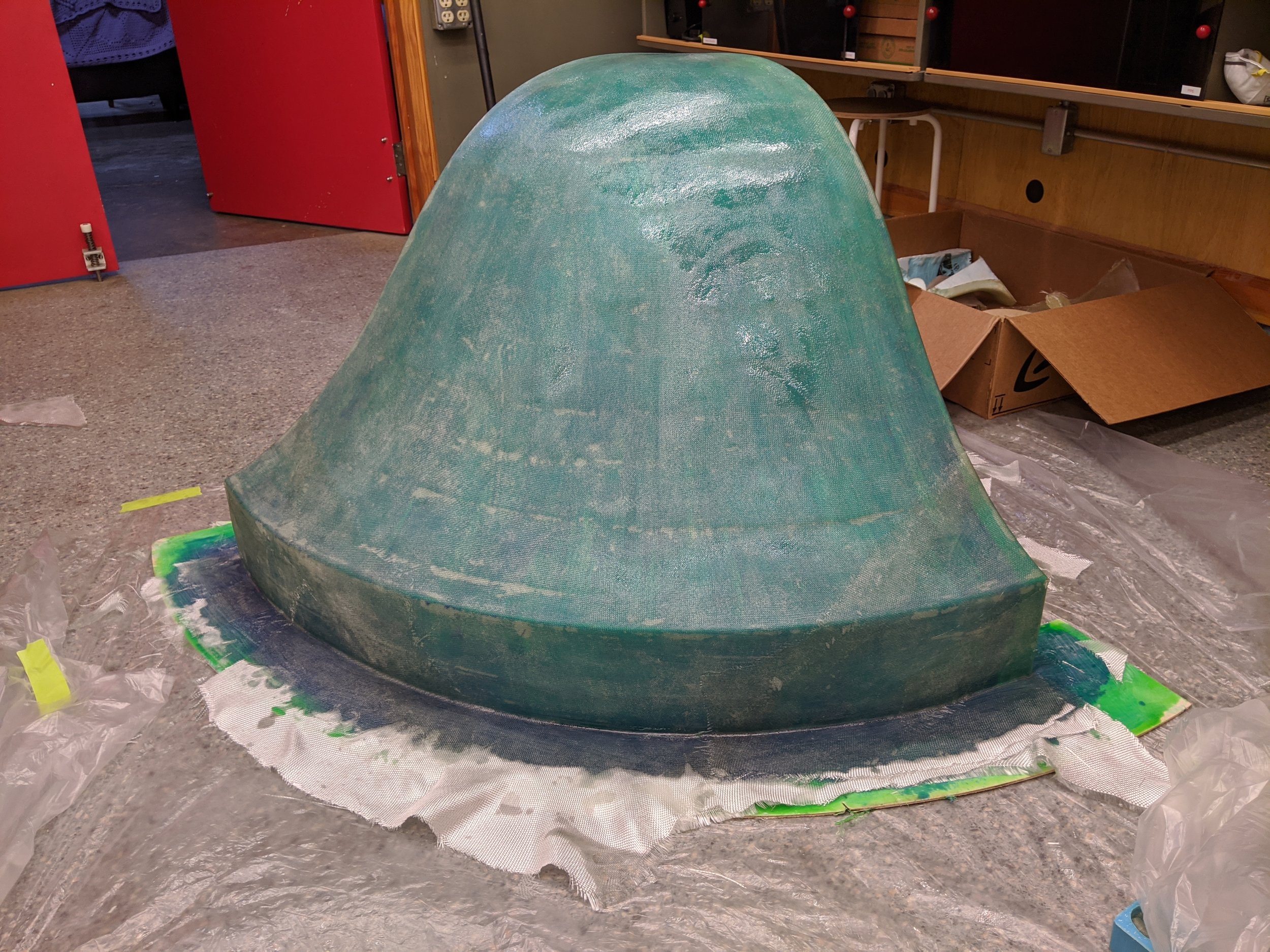CORE SAMPLE
Core Sample is a speculative design project that imagines a portal opening into an unknown time and place hundreds of years beyond the apocalyptic present.
In the space of two diametrical meters, natural life cohabitates with new, exotic lifeforms that emerge after the holocene. Unlike a geologic core sample, which speaks to the intractable past leading to the current moment, our core sample isolates a future moment of fragility and potential, where the balance of life depends on a single, elemental seed.
This exploration, conducted by OVERGROWN Group in October of 2020, drew upon novel inflatables research by artist Kuan-Ju Wu and myself, and incorporated pneumatic flora and fungi into a living, breathing representation of ecological hybridity. Our influences included the poem “pity this busy monster, manunkind,” by e. e. cummings, The Lorax by Dr. Seuss, and Jean Giono’s allegory L'homme qui plantait des arbres, all of which explore the consequences of human activity on our natural environment. While it remains uncertain whether or not, or in what ways, humans will cohabitate within nature three hundred years from now, “Core Sample” illustrates the power of a single seed to redeem an environment and give new life to even the most impoverished wasteland.
The work was selected from 71 other applications and funded by the Taiwan Ministry of Culture Arts and Technology: Creative Innovation and Counseling Project.
The project resulted in several showings: two outdoor installations in San Fransisco’s East Bay, and two in indoor locations in Taiwan. To support these different venues, we generated two sizes of kinetic sculpture: one small, and one large. It was important to us that our “portal” was three-dimensional, and that viewers would be able to walk competely around the sculpture, adding to the sense that such a space emerged unannounced from a future world.
C-Lab in Taipei, Taiwan
Observatory Hill, UC Berkeley
DigiWave Art and Tech Festival in Kaohsiung, Taiwan
Tilden Park, Berkeley
Fabrication
After a discussion of our objectives, we began by manufacturing a visualization of some possible profiles at a 1:6 scale.
The Shopbot PRS Alpha is a 3-axis CNC machine capable of cutting woods, soft metals, and, in this case, foam.
After settling on a profile, we generated a drafted mold for a fiberglass layup. This form would need to be structural, supporting up to 80 lbs of foliage, soil, and water. It would also need to be waterproof, protecting the delicate electronics within.
Challenges included the generation of novel enclosure casting strategies, as well as the complexity of organizing dozens of pneumatic pumps in support of the external foliage.
Our inflatable flora and fungi used parametric design to provide for the rapid generation of original forms. Changing a single sketch in our Fusion 360 file regenerates all of the files necessary to cast new enclosures, including all parts, molds, and metamolds. A single diffused neopixel inside each organism allowed us to program brilliant and adaptive color patterns.
Our floating acorns used Qi chargers to generate electricity for our custom PCB, enabling wireless luminance that did not depend on heavy internal batteries. The acorn shell was printed to contain LEDs, the Qi coil, and a magnet in a stable assembly. An off-the-shelf assembly of programmable electromagnets was used to levitate the acorn.
Watch the full documentation below!













